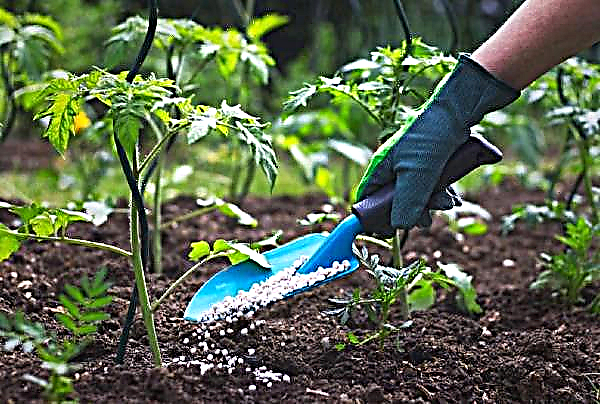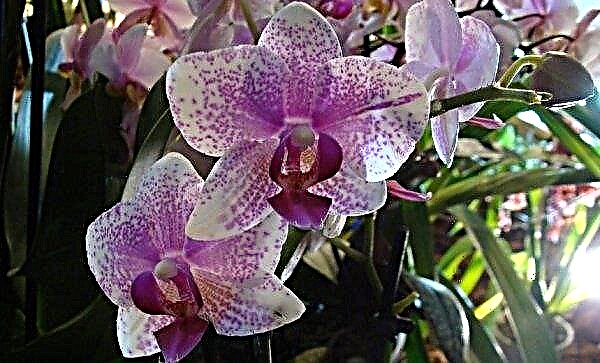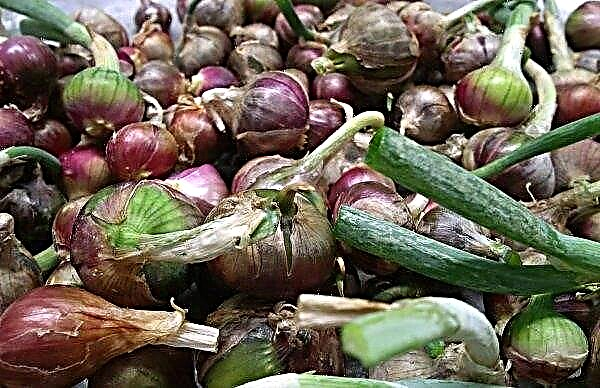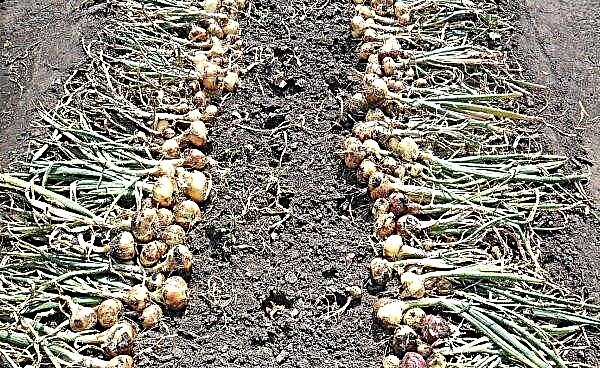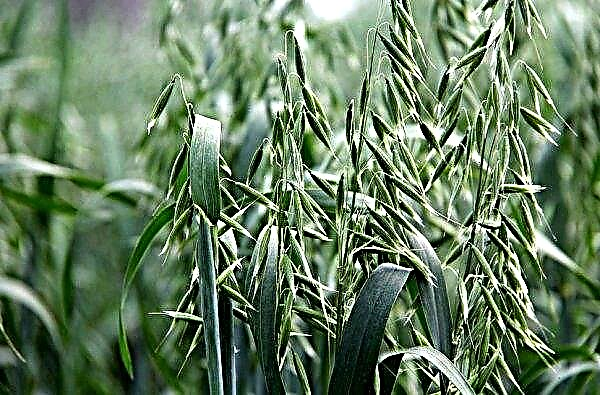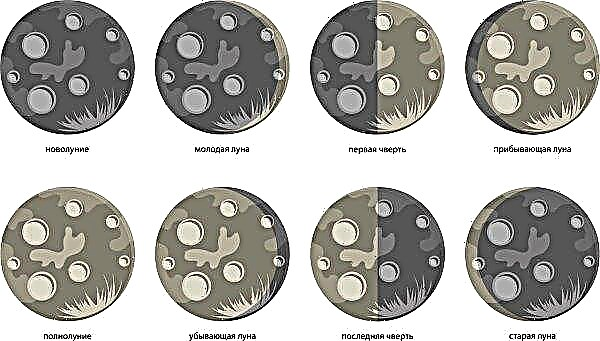A small garden pest ─ aphids - can cause great damage to cultivated plants: sucking juice from greenery, it reduces yield and slows the growth of vegetable crops. Pepper juice is rich in nutrients, so the parasite affects the culture most often. There are effective methods to combat aphids, knowing which you can avoid the negative consequences of its appearance.
Pest Description
Aphids ─ a winged or wingless parasitic insect that colonizes green plants. It feeds on the juice of young shoots, carries viruses of plant diseases. If the leaves turn black and the buds fall, then the number of insects has reached catastrophic proportions. You can detect an insect on the back of a green leaf.
- oblong or teardrop-shaped body;
- size - from 3 to 8 mm;
- the body is soft, transparent, its color depends on the color of the plant on which the insect parasitizes;
- the head is trapezoidal, on the jointed antennae located on the forehead, there are hearing and touch organs;
- eyes are colored red, brown, black, insects have excellent vision;
- legs are thin, long, have walking and jumping functions;
- oral apparatus in the form of a proboscis, capable of piercing the surface of a green leaf or stem;
- the abdomen consists of 9 segments, the last of which is underdeveloped, in the form of a tail;
- the body is covered with a gun of various lengths.
Did you know? Ants guard aphid colonies by feeding on their sweet pad. For the winter, they roll insect eggs in an anthill. to save the colony from extinction.
Signs of the appearance of aphids
The insect eats the juice of the plant, therefore, first of all, if the aphid has attacked, the pepper begins to wither. Noticing the slow withering of the plantations, check the underside of the leaves: on them you can find adults or laying eggs of the parasite. Especially dangerous is the appearance of aphids on seedlings. Drinking juice, the parasite reduces the development of seedlings, and a large population of insects leads to the death of pepper. Other signs:
Other signs:
- the leaves on the bell pepper turn yellow and curl;
- inflorescences dry and fall, buds are not tied;
- leaves are covered with a sticky shiny coating - pad;
Why does aphid appear on peppers
Sweet pepper is a succulent plant that is 80% water. The juice of the culture contains many amino acids and carbohydrates - a favorite treat of a garden pest. Most often, green and black aphids settle on sweet pepper.
Important! In 30 days, the aphid colony grows to 100 thousand individuals. Constantly multiplying, insects cause irreparable damage to plants.
What to do and how to process peppers at home
It is possible to fight insect colonies sucking plant sap using chemical means, biological methods and folk methods. Each of them depends on the number of insects on the pepper, as well as on the age of the seedlings: during fruiting, plants are best treated with folk methods, without the use of chemicals.
Chemicals
The humid and warm climate of the greenhouse is an excellent environment for the appearance of aphids, therefore it is necessary to treat plants from the parasite not only in the open ground, but also in greenhouse conditions. The most effective method of destroying a large colony in a greenhouse is chemical treatment:
- Karbofos - seedlings need to be sprayed with a solution of this insecticide at the rate of 1 tbsp. l funds for 10 liters of water.
- "Fufanon" - a broad-spectrum insecticide that destroys aphids, ticks, moths, moths, whiteflies. It will help to cope with aphids after a single treatment.
- Inta-Vir - an insecticide that destroys aphids at a time. A tablet of the drug is dissolved in 10 l of water, and then the plants are carefully treated.
- Aktara - the drug is used twice with a break of a week. The drug is assigned toxicity of the third class. Danger to other insects.
Important! When processing plantings with chemicals, you must take precautions: wear gloves, a mask or a respirator, long-sleeved clothing, and glasses.
Folk remedies
You can prepare a means that destroys insects on bitter or bell peppers according to folk recipes, the basis of which is a soap solution:
- Grate 5 g of laundry soap.
- Dissolve the chips in 1 liter of warm water, mix well.
- Insist 5 hours. Strain.
 By adding additional components, they are preparing an effective means of combating the pest:
By adding additional components, they are preparing an effective means of combating the pest:- Processing of pepper beds with soda: add 1 tbsp. To 1 liter of water soda and 40 g of laundry soap. Combine everything, mix well.
- The solution with liquid ammonia has an odor irritating the respiratory system, causing paralysis of insects. To 10 liters of water add 2 tbsp. ammonia, 1 tbsp. laundry / liquid soap (dishwashing detergent).
- Hydrogen peroxide will help get rid of insect colonies on sweet pepper and prevent mold. The solution is prepared as follows: 2 tbsp. Are added to 900 ml of water. alcohol, 50 ml of peroxide, a few drops of dishwashing liquid and mix everything.
Biological products
You can fight aphids in the home area with biological methods, which include:
- Attraction of birds that destroy the pest: tits, hemp, sparrows. The birds should be provided with food and drink on the site, constantly maintaining the contents of the feeders until the birds destroy all the insects. Aphids and insects feed: ladybug, flower girl, lacewing.
- Manual pest collection. This ecological method is laborious, it is good to use it with a small amount of pests on plants with fruits or on young seedlings.
Did you know? American scientists have estimated that the total mass of aphids that parasitize on 2 hectares of sugar beet planting is 25 kg!
Preventive measures
The aphid on the pepper does not appear out of nowhere. The ability to fly and jump contributes to the spread of pests from neighboring areas, and untimely detected insects breed very quickly, thanks to an excellent nutrient medium.  To avoid distribution, you need:
To avoid distribution, you need:
- Regularly inspect plants at the border of the site for insects.
- If a pest is found, treat the entire area, not just the infected plant.
- Apple, pink, grape, beet aphids - polyphages. In case of "overpopulation" they switch to beds with bell pepper, causing significant damage without timely processing. Spraying fruit trees will reduce the likelihood of pests on vegetable beds.
- Onions and garlic are planted around the perimeter of the bed, which have a repelling pungent odor.
- All garden tools, as well as shelving for greenhouses, are regularly treated with soda solution or bleach.

